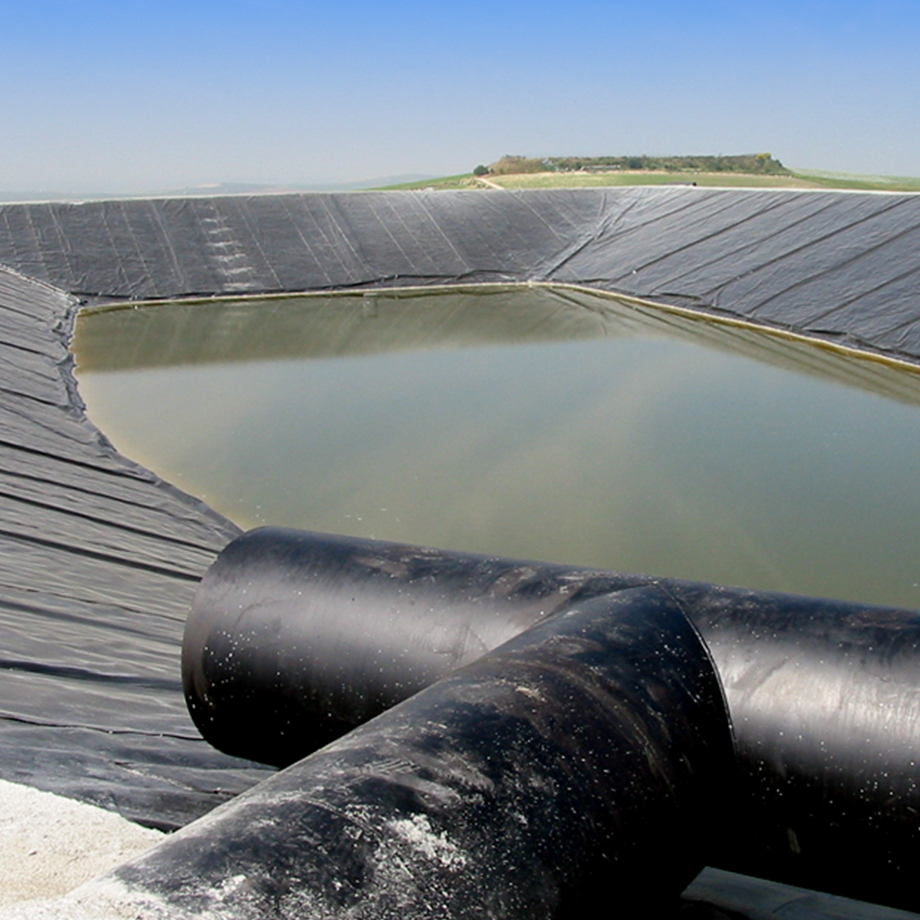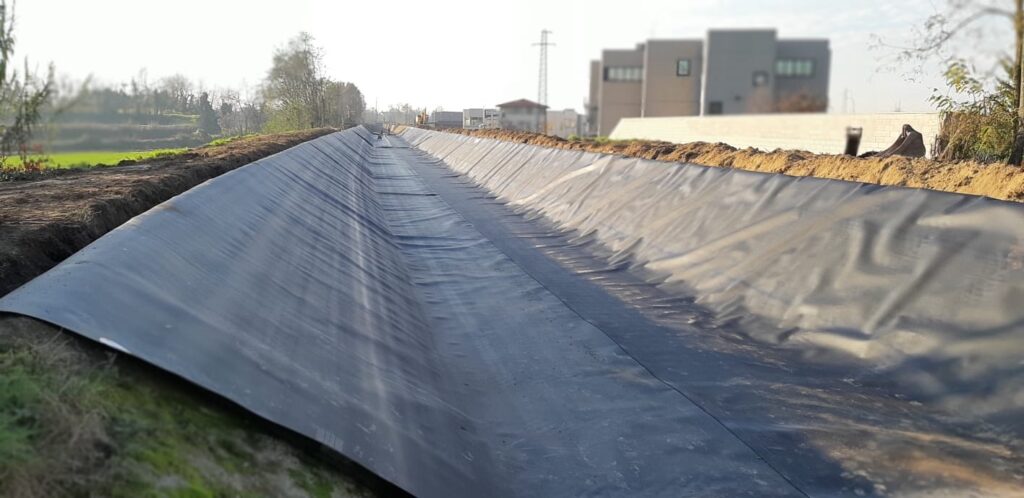Dam liner installation
Installing a dam liner is a crucial step in constructing a dam to prevent leakage and seepage of water. Here’s a general guide on how dam liners are installed:
Site Preparation: Before installation, the site needs to be prepared adequately. This includes clearing the area of any debris, vegetation, or sharp objects that could potentially damage the liner.
Selection of Liner Material: There are various types of materials used for dam liners, including PVC, HDPE (High-Density Polyethylene), EPDM (Ethylene Propylene Diene Monomer), and others. The choice of material depends on factors such as budget, environmental conditions, and required lifespan.
Measurement and Cutting: Measure the dimensions of the dam carefully to ensure that the liner will fit properly. Cut the liner material according to these measurements, leaving some extra material around the edges to allow for adjustments during installation.
Placement of Underlay: In some cases, an underlay material may be used beneath the liner to provide additional protection and cushioning. This underlay helps to prevent punctures and abrasions to the liner from the underlying surface.
Installation of Liner: Lay the liner over the prepared surface of the dam. Start from one end and gradually unfold the liner across the entire surface, smoothing out any wrinkles or creases as you go. It’s essential to ensure that the liner is flat and without any folds to prevent potential weak spots.
Securing the Liner: Once the liner is in place, it needs to be secured to prevent shifting or displacement. This can be done using various methods depending on the liner material and site conditions. Common methods include anchoring the edges of the liner with soil, rocks, or other heavy materials, or using mechanical fasteners such as screws or bolts.
Seaming: If the dam is larger than the size of the liner, multiple pieces of liner may need to be seamed together. This is typically done using heat welding, adhesive bonding, or other specialized techniques to create a watertight seal between the sections.
Inspection and Testing: After installation, the dam liner should be inspected thoroughly to ensure that it has been installed correctly and there are no defects or vulnerabilities. Testing may also be conducted to check for leaks or seepage before filling the dam with water.
Maintenance: Regular maintenance of the dam liner is essential to ensure its long-term effectiveness. This may include periodic inspections, repairs of any damage or wear, and proper management of vegetation and debris around the dam.
Monitoring: Continuous monitoring of the dam and liner is crucial to detect any potential issues early on and prevent costly repairs or failures. This can be done through visual inspections, as well as using sensors and other monitoring equipment to track factors such as water levels and pressure.

How to use geomembrane
Geomembranes are impermeable membranes used in various civil engineering and environmental applications to control the movement of liquids, gases, and pollutants. Here’s how geomembranes are typically used:
Landfills: Geomembranes are commonly used as liners in landfills to prevent leachate (liquid that has passed through waste) from contaminating the surrounding soil and groundwater. They are installed at the base of the landfill and sometimes on the sides as well, creating a barrier that prevents the escape of pollutants.
Pond and Lagoon Liners: Geomembranes are used to line ponds, lagoons, and reservoirs to prevent seepage and leakage. They create a barrier that retains water and prevents it from infiltrating into the surrounding soil or aquifers. These liners are often used in applications such as agricultural irrigation ponds, decorative ponds, and wastewater treatment lagoons.
Mining Applications: Geomembranes are utilized in mining operations for applications such as heap leach pads, tailings impoundments, and acid mine drainage (AMD) containment. They help to contain and control the movement of potentially harmful substances, such as leachate and acidic runoff, thus minimizing environmental impact.
Waterproofing: Geomembranes are used for waterproofing applications in various civil engineering projects, such as tunnels, underground structures, and foundation walls. They provide a durable, impermeable barrier that protects against water infiltration and helps to prevent structural damage and deterioration.
Aquaculture: Geomembranes are used in aquaculture operations for lining fish ponds, shrimp ponds, and other aquatic enclosures. They help to maintain water levels and prevent seepage, ensuring a controlled environment for fish and other aquatic organisms.
Secondary Containment: Geomembranes are used in secondary containment systems to prevent leaks and spills from hazardous waste storage facilities, chemical storage areas, and industrial sites. They serve as a barrier that contains any spills or leaks, preventing them from reaching the surrounding environment.
Erosion Control: Geomembranes are sometimes used in erosion control applications to stabilize slopes, prevent soil erosion, and protect embankments from water damage. They can be installed as part of erosion control blankets or mats, providing an additional layer of protection against water runoff and erosion.

geomembrane specifications
The specifications of geomembranes can vary depending on the specific application and requirements of the project. However, here are some common specifications and characteristics to consider when selecting a geomembrane:
Material Type: Geomembranes are typically made from synthetic materials such as HDPE (High-Density Polyethylene), LDPE (Low-Density Polyethylene), PVC (Polyvinyl Chloride), EPDM (Ethylene Propylene Diene Monomer), or XR-5 (a reinforced polyethylene). Each material has its own strengths, weaknesses, and suitability for different applications.
Thickness: Geomembranes are available in a range of thicknesses, typically measured in millimeters (mm) or mils (1 mil = 0.0254 mm). The thickness of the geomembrane should be selected based on factors such as the hydraulic head, the potential for puncture or abrasion, and the expected lifespan of the installation.
Tensile Strength: Tensile strength refers to the maximum stress a geomembrane can withstand without breaking when subjected to tension or pulling forces. It is typically measured in units of force per unit area (such as pounds per square inch, PSI, or kilopascals, kPa). Higher tensile strength indicates greater resistance to stretching or tearing.
Tear Resistance: Tear resistance is the ability of a geomembrane to resist the propagation of tears or punctures when subjected to mechanical forces. It is often measured in units such as pounds-force (lbf) or Newtons (N). A higher tear resistance indicates greater durability and resistance to damage.
Puncture Resistance: Puncture resistance refers to the ability of a geomembrane to withstand penetration by sharp objects or debris without puncturing or tearing. It is typically measured in units such as pounds-force (lbf) or Newtons (N). Higher puncture resistance is essential for applications where the geomembrane may be exposed to potential puncture hazards.
Flexibility and Elongation: Flexibility and elongation refer to the ability of a geomembrane to conform to the contours of the substrate and accommodate movements without cracking or splitting. These properties are often expressed as a percentage of elongation at break or elongation at yield.
Chemical Resistance: Geomembranes may be exposed to various chemicals, including acids, alkalis, and hydrocarbons, depending on the application. It is essential to select a geomembrane material that offers adequate resistance to the specific chemicals present in the environment to prevent degradation or failure.
UV Resistance: UV resistance is important for geomembranes installed in outdoor applications exposed to sunlight. UV stabilizers can be added to the geomembrane material to enhance resistance to degradation caused by prolonged exposure to ultraviolet radiation.
Seam Strength: For installations requiring multiple geomembrane panels to be seamed together, the strength of the seams is critical to the overall integrity of the liner system. Seam strength is typically evaluated through testing methods such as peel testing or shear testing.
Certifications and Standards: Geomembranes may be subject to industry standards and certifications, such as ASTM (American Society for Testing and Materials) standards or GRI (Geosynthetic Institute) certification, which ensure quality and performance compliance.
近期文章
Author
-

Founded in 2002, Tinhy's team focuses on the manufacturing, marketing, installation, application and research and development of geosynthetic materials.
View all posts

